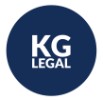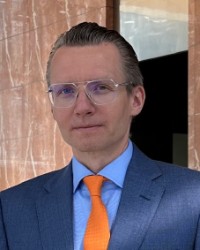Life Sciences 2025
Poland
Trends and Developments
Since January 2025, Poland has assumed the presidency of the Council of the European Union, a fact of key importance for the healthcare system and the pharmaceutical market. Currently, a pharmaceutical package is being finalised, the European Health Data Space is being implemented and the health technology assessment (HTA) and so-called European biopharmaceutical strategy are being reformed. These activities will be of significant importance for Europe’s competitiveness in the area of healthcare.
The healthcare market in Poland is investing in necessary innovations, which will require the supplementation of EU legislation and the creation of new legal and investment frameworks. An example of this is investment in artificial intelligence (AI) factories in line with Council Regulation (EU) 2021/1173 of 13 July 2021 on establishing the European High-Performance Computing Joint Undertaking, aimed at the creation of supercomputers implementing state-of-the-art generative AI models to drive progress in AI applications (apps) in various sectors, such as healthcare.
Healthcare Cybersecurity
To counter cyber-attacks, advanced cybersurveillance and espionage tools, such as rootkits, as well as investment in cybersecurity operations and databases belonging to healthcare entities are key. The Polish healthcare sector is highly valuable for foreign IT service providers, providing data protection solutions. Polish law generally focuses on establishing responsibility for the security of healthcare market entities, the internal procedures of such entities and the associated complex data processing. Polish regulations cover due diligence procedures, penalisation and the distribution of liability in case of advanced cyber-attacks on the critical infrastructure of public healthcare entities. Salt Typhoon is a well-known threat actor, but above all, ransomware – malicious software that infects computer systems and then encrypts the data stored therein, making it inaccessible to the owners of the systems – must be countered.
In the healthcare sector, the Polish justice system currently uses legal tools that are aimed at protecting data and IT systems and counteracting cybercrime. Article 267 of the Penal Code is increasingly used for cybercrime, penalising unauthorised access to computer systems (eg, through password capture or overcoming system security to illegally obtain protected information). In Poland, there is also a ban on creating and distributing malicious software, as specified in Article 269b of the Penal Code. This includes computer viruses, spyware and tools that allow the bypassing of security and attacking of IT systems, which is the most common form of attack on medical data.
In the civil sphere in Poland, as in the rest of the EU, the basic legislation regulating civil liability for data breaches, including medical data, is the General Data Protection Regulation (GDPR), with the key articles being Article 82 (liability for data leakage) and Article 32 (required technical measures). This Regulation forces healthcare entities to implement information security management standards, such as the International Organization for Standardization (ISO) 27001 standard.
The most recent example of a cyber-attack in the healthcare sector in Poland is an incident involving one of the country’s largest hospitals, which was targeted by a ransomware cyber-attack that disrupted the facility’s computer systems. The attack involved the use of malicious software that encrypted files stored on the hospital’s servers, posing a high risk of unauthorised access and potential theft of patients’ and employees’ personal data.
Use of Artificial Intelligence in the Life Sciences Sector
Regarding AI use in life sciences, the most important legal acts are Regulation (EU) 2024/1689 of the European Parliament and of the Council of 13 June 2024 on the establishment of harmonised rules on AI and the Act of 6 September 2001 – Pharmaceutical Law (Journal of Laws of 2024, item 686, as amended). In the context of the use of AI in the development of new medicines, the provisions on high-risk AI systems are important. High-risk systems are systems that meet the conditions specified in Article 6, paragraph 1 of the Regulation, as well as those listed in Annex III of the Regulation as systems posing a significant risk of damage to health, safety, fundamental rights (eg, privacy) or the environment. The Regulation separately specifies the obligations of suppliers of high-risk systems (primarily in Article 16 et seq) and the entities using such systems (Articles 26–27). Suppliers of high-risk systems will also have to undergo a procedure assessing their compliance with the requirements of the Regulation.
As alluded to above, AI systems used in the healthcare sector, including for the development and testing of new drugs, can be classified as high risk. In practical terms, by using an AI system to process registration documentation, companies will be able to speed up drug approval procedures during the necessary registration processes. In addition, AI algorithms will be able to help analyse large data sets, including preclinical and clinical documentation. AI can also facilitate the conduct of clinical trials, including through automatic analysis of clinical data and selecting patients for clinical trials and subsequently monitoring them. Moreover, AI systems can promote pharmacovigilance: algorithms can analyse adverse event reports and identify potential risks to patients. However, it should be remembered that any implementation of AI must comply with the principles of good manufacturing practice (GMP) and good clinical practice (GCP), and with EU regulations.
Introducing modern technologies into the regulated pharmaceutical environment is associated with challenges related to ensuring quality and compliance with applicable regulations. In this context, Good Automated Manufacturing Practice (GAMP) 5 is one of the most important tools for managing the life cycle of computer systems in the pharmaceutical and biopharmaceutical industries, including systems based on AI.
GAMP 5 is a set of guidelines developed by the International Society for Pharmaceutical Engineering (ISPE) to assist pharmaceutical companies in ensuring compliance with regulations concerning the quality and security of computer systems. This document presents a comprehensive approach to managing the life cycle of computer systems, including the validation, design, implementation, operation and retirement of systems that are used in environments requiring high quality standards, such as the pharmaceutical industry.
Medical Device Conformity Assessment
Significant regulations and trends can be observed in medical device conformity assessments for regulatory purposes. In this context, guidelines for technical and legal classification and certification of medical products and diagnostic devices, performed before they are placed on the market by a notified body assessing conformity in accordance with Regulation 2017/745, as well as the ISO 13485 standard – Quality Management System for Medical Devices, are important.
ISO 13485 specifies the requirements for a quality management system that can be used by organisations engaged in the design, development, production, installation and servicing of medical devices and the provision of related services.
The current EU regulations on medical devices, active implantable medical devices and in vitro diagnostic medical devices, which place greater emphasis on proving efficacy and safety, conducting clinical trials and detailed assessment before placing devices on the market, are important for medical device market participants. The key regulations are Medical Devices Regulation (EU) 2017/745 on medical devices and active implantable medical devices and In Vitro Diagnostic Medical Devices Regulation 2017/746.
The key changes introduced by these regulations include:
- the introduction of the European Database for Medical Devices (EUDAMED), which facilitates the tracking of medical devices;
- extension of market surveillance and product surveillance (Articles 84–93);
- clarification of the roles and responsibilities of economic operators (Articles 10–30);
- the introduction of unique device identification (UDI) codes and implant cards (Articles 18 and 27);
- new rules on clinical evaluation and clinical trials (Articles 55–61); and
- changes to safety and effectiveness requirements (Annex I).
Problems Encountered by Foreign Drug Manufacturers Conducting Clinical Trials in Poland
Foreign drug manufacturers are very active on the Polish market, testing the effectiveness of their newest drugs for serious and complicated diseases. According to Eurostat, drug creation accounts for up to three-quarters of the drug cycle, and only one in several thousand chemical compounds meets the regulatory and economic conditions for commercialisation and entry into the market as a finished drug product. Clinical trials represent the final phase of drug creation and are critical for validating the many years of effort expended by a drug manufacturer, which usually begins with the formula being covered by patent protection. Poland, as a member of the EU, is subject to the highly restrictive Regulation 536/2024, which regulates the entire process of clinical trials, including the actors therein, supervision and even IT infrastructure. In the Polish legal system, Regulation 536/2024 is supplemented primarily by the Pharmaceutical Law, encompassing several thousand implementing acts and the Act of 9 March 2023 on clinical trials of medicinal products for human use. Despite the extensive experience of regulatory bodies and the large number of regulations, there is unfortunately no regulation for the release of a drug after a clinical trial if a foreign pharmaceutical company decides not to enter into the sales process (ie, does not commercialise the drug). In Europe, this is referred to as “compassionate use”, which is not regulated in Poland.
It is important to anticipate the possibility of not entering the market with a given drug after the completion of a clinical trial given that, in Poland, foreign sponsors have occasionally made reference to very detailed changes in Polish pharmaceutical law in their clinical trial plans – associated with the introduction of the compassionate use procedure – which unfortunately did not come to fruition.
Investments in the Life Sciences Sector in Poland and Financing Models
Changes have occurred in the way biotechnology companies and investment funds operate. In recent years, many biotechnology companies have used technologies based on genetic information to create so-called biomolecular platforms. These platforms intervene at different points in the biomolecular information chain to modify the processes that cause diseases. The software-based nature of this approach to drug development allows for the design of many new therapies on a single platform that contains instructions for modifying the molecular hardware associated with the diseases. A biomolecular platform, in contrast to the traditional approach of focusing on a single technology, allows for the development of multiple therapies simultaneously. Companies with a biomolecular platform start working on a therapeutic solution by building a platform and designing experiments to demonstrate its usefulness as a source of therapeutics (eg, vaccines). They then identify diseases, therapeutic areas or groups of biologically related diseases that can be treated with these therapeutic tools, and finally prioritise drug discovery and development for selected diseases. Digital/IT solutions are an integral part of the biomolecular platform-based model at every stage of the project, from drug discovery and the preclinical phase to clinical trials and manufacturing.
Another important trend is the application of the portfolio model to the financing and management of biotechnology R&D. The portfolio model is an innovative business model in which a portfolio manager controls a set of companies or projects spanning multiple technologies and therapeutic areas. Rather than focusing on a single technology, the portfolio manager draws on experience in fundraising, investing, venture creation, R&D, manufacturing, commercialisation, management systems and credibility building – as well as relationships with key stakeholders – to assemble a portfolio of investments, each of which is assigned to a unique drug programme. In the portfolio model, investors allocate capital to a central management team that offers a competitive advantage through its expertise in managing a variety of different companies and organisations. The new model allows the portfolio manager to raise capital from a broader group of investors. There is evidence that the portfolio model is an effective mechanism for managing R&D in the life sciences sector in Poland.
Access to Medicinal Products for Patients: Architecture of the Pharmaceutical Law in 2025
Poland, as one of the 27 members of the EU, has a very large number of regulations pertaining to the quality, efficacy and safety of drugs and drug marketing authorisation. In the following, trends in this area set to continue in 2025 are detailed.
Greater information requirements
The Pharmaceutical Law focuses on regulating the release of medicinal products prescribed by a doctor to a patient. Currently, the regulations take into account the progress of a prescription through the IT system and documentation of the patient’s need for a drug. A recent example is a regulation that specifies that more information is required for the release of a drug to a patient, based on communication between the doctor and a pharmacist. This is associated with the new principle whereby it is not necessary to fulfil the entire prescription in one pharmacy (amendment to the Act of 27 August 2004 on healthcare services financed from public funds; Journal of Laws of 2024, item 146, as amended). Another example is the requirement for more information about the drug use amount associated with long-term (eg, annual) prescriptions, effective from August 2024. These examples reflect a clear trend towards greater control over the amount of a drug that a patient takes, partly attributable to problems with target and parallel imports in Poland.
Tetrahydrocannabinol
There is a trend towards greater patient access to consciousness-altering substances. Attitudes regarding whether psychoactive substances should be restricted vary within the EU. As an example, tetrahydrocannabinol (THC) is available in Poland on prescription as medical cannabis, in line with a national procedure for introducing pharmaceutical raw materials to the market, compliance with GMP documentation requirements and an amendment to the Pharmaceutical Law excepting medical cannabis from anti-drug laws (primarily Article 33a of the Act of 29 July 2005 on Counteracting Drug Addiction). The Pharmaceutical Law is currently aimed at limiting access to medical cannabis to physical pharmacies and tightening the requirements for issuing prescriptions thereof. This is because the Polish government views the popularity of online platforms combining medical advice with prescription services as an undesirable attempt to circumvent the law on medical cannabis, such that THC can be used for purposes other than pain management. As the problem of abuse of narcotic and psychotropic drugs is growing, the Polish Ministry of Health has decided to introduce further restrictions to significantly reduce the over-prescription of drugs subject to special controls. The latest Regulation of 30 October 2024 specifies substances for which prescriptions can no longer be obtained in Poland as part of an online service – ie, via so-called prescription machines/platforms and private teleconsultations. In accordance with this Regulation, from 7 November 2024, a doctor is obliged to consult with their patient in person before writing a prescription for fentanyl, morphine, oxycodone, non-fibrous hemp (including dried herbs and medical cannabis extracts) or pharmaceutical tinctures. The Regulation provides for one exception, where these drugs can be prescribed via a teleconsultation only as a continuation of treatment by a primary care physician (excluding night and holiday care).
Over-the-counter drugs
The sale of over-the-counter (OTC) drugs in places other than pharmacies (eg, large grocery stores, multi-sector stores, railway stations, petrol stations) is supervised by the Polish authorities, requiring restrictions and constant supervision. According to publicly available data, OTC sales are worth PLN9 billion gross for pharmacies, versus PLN0.5 billion outside of pharmacies (ratio of 1:18). The Pharmaceutical Inspector makes the decisions regarding the OTC (without prescription) sale of specific drugs outside of pharmacies. This can be very complicated for manufacturers, with the procedure being administrative in nature and depending on arguments that do not necessarily have a legal basis, instead being related to distribution and GMP.
Another problem related to the distribution of OTC drugs outside of pharmacies concerns the classification of suspensions not as drugs, but rather as dietary supplements or medical devices. Distributors and manufacturers are looking for easy and legal sales models, and the classification of a product as a drug, supplement or medical device gives rise to frequent disputes between manufacturers and pharmaceutical market supervisory authorities.
New Regulations for Health Apps (Digital Therapeutics)
The Polish Ministry of Health is currently promoting free apps for monitoring the health of patients. Apps will be eligible to receive the “Ministry of Health-Certified Application” accreditation for a period of 24 months. According to the new regulations, the aim of the certification programme is to recognise health apps that can not only provide information about health but also safely store data, where their software will be classified as a “medical device”. A health app is an app that is used to monitor health. Some apps may be recognised as medical devices if they meet the requirements of Regulation (EU) 2017/745 of the European Parliament and of the Council of 5 April 2017. The certification is designed to show that the app is a safe and reliable tool that can be used by patients and medical personnel. For developers, the certification may be useful for promoting apps by providing proof of their effectiveness. Currently, two apps in the health app portfolio have been certified: the first was created by doctors to assess symptoms and their causes, and the second was designed for people struggling with allergies.
Through the certification programme, apps are verified in terms of their content, functionality, ease of use, innovation and information security. The programme is scheduled to finish in November 2026 and, according to the Ministry’s announcements, may be the first step towards medical apps in Poland being issued to patients on prescription.
Current Problems in Creating and Distributing Life Sciences Products: Selected Examples
Concerning the creation and distribution of medicines (including OTC medicines), medical devices for treatment and in vitro diagnosis, dietary supplements, novel foods and “borderline” products, challenges are arising in relation to the rapid changes in regulations and the need to adapt production to a relatively short vacatio legis.
For example, the regulations that help ensure products are fit for use over the long term are changing in relation to specific chemical compounds and food preservatives. The large distribution chains of functional foods, such as energy bars, are not keeping up with the bans on the use of preservatives and certain colorants. Current trends point to poor labelling practices and the use of substances included in the Rapid Alert System for Food and Feed (RASFF) database.
Under Article 50 of Regulation (EC) No 178/2002 of the European Parliament and of the Council of 28 January 2002, the RASFF was established as a notification system for foods that pose a direct or indirect danger to human health. Based on product testing and notifications via the RASFF, non-compliant products posing a risk to humans are withdrawn from the market. The RASFF is thus an important source of information on product safety, identifying substances in imported products that, if consumed by humans, may have serious negative health effects. In Poland, in accordance with Article 85 of the Act of 25 August 2006 on food and nutrition safety, the Chief Sanitary Inspectorate manages the RASFF.
It should be remembered that the producer (or other entity, such as the importer) that introduces a product to the market is responsible for food safety in Poland. It is their responsibility to ensure procedures and safeguards that minimise the risk of contamination are in place.
When a food that may pose a health risk is in circulation and/or in the possession of consumers, the Chief Sanitary Inspectorate informs the public by publishing warnings on the office website, including the name and type of food; the name of the manufacturer, batch number and expiry date; the nature of the risk and the preventive measures taken; and recommendations for the consumer.
Technology Transfer in the Life Sciences Sector
A noticeable trend in the Polish life sciences sector associated with regulatory changes is cross-border technology transfer. The process of creating, for example, a medical device requiring algorithms and hardware components is a complex, multi-year procedure often supported by EU funds and sometimes based on co-operation with scientists. Regulatory changes may preclude the legal sale of such products, not only because of intellectual property protections but also because of the tightening of data processing rules, sensitive data protections and concerns around patient welfare.
Therefore, new opportunities for the sale or transfer of technology to entities outside the health sector are being sought in order to give technologies new life as double use technologies. Technology transfer involves various legal vehicles, and the transfer model must take into account all issues associated with a given technology, including industrial property rights, R&D results, patent protection, potential future value, settlements with entities involved in the technology’s creation and the protection of algorithms that, in some cases, may qualify as medical devices.
The life sciences sector accounts for a very large share of the cross-border economic turnover in Poland. In 2023, the value of the healthcare market, excluding medicines, amounted to PLN191 billion, with an average annual growth of 8.3% forecast in the period 2023–28. In the context of an aging society, the growing prevalence of chronic diseases and the increased wealth of citizens, the healthcare sector in Poland offers numerous investment opportunities.
Kieltyka Gladkowski KG Legal
Twarda 18 Street
00-105
Warsaw
Poland
+48 50 164 85 00
+48 12 426 47 43
office@kg-legal.pl www.kg-legal.eu



